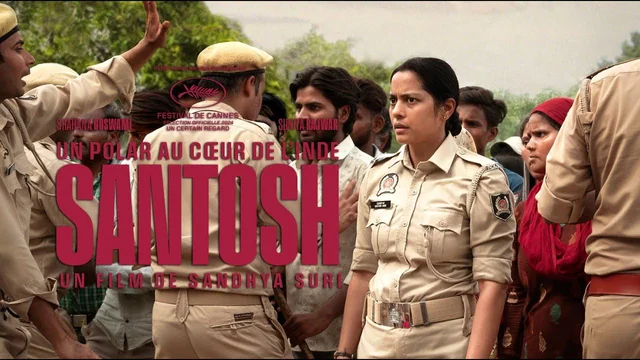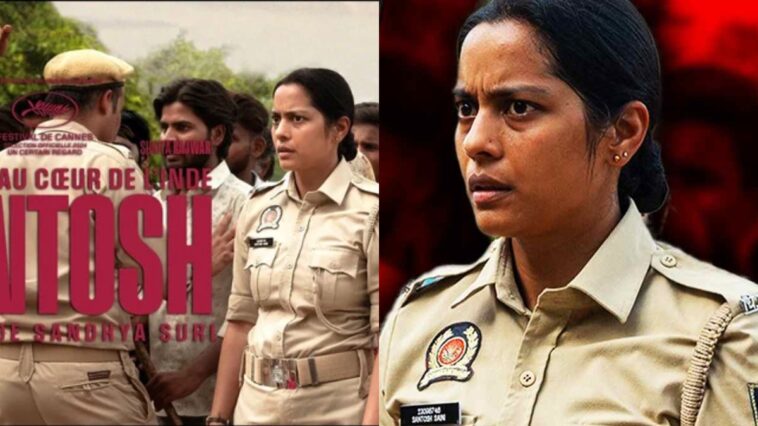In a cinematic landscape often dominated by larger-than-life action and romance, Santosh emerges as a poignant, grounded tale that highlights the resilience of the human spirit amidst systemic challenges. Directed by Sandhya Suri, the film explores the struggles of its titular character, a young widow thrust into the male-dominated and corrupt world of Indian law enforcement. With a narrative rich in social commentary and emotional depth, Santosh is a story of perseverance, self-discovery, and moral dilemmas.
The film’s ending has been the subject of much discussion, as it encapsulates the central themes of the story while leaving audiences with thought-provoking questions. Below, we break down the film, its key themes, and the implications of its powerful conclusion.
Plot Overview
The story of Santosh begins with the protagonist, a 28-year-old woman, grappling with the sudden loss of her husband, a police officer. In line with a government program aimed at supporting the families of fallen officers, Santosh is offered her late husband’s job in the police force. Although initially reluctant, societal and familial pressures compel her to accept the position.
As she steps into her new role, Santosh is quickly exposed to the harsh realities of the profession. She faces skepticism from her male colleagues, who see her as an outsider unfit for the job. Despite the hostility, Santosh is determined to prove her worth and earn respect in a deeply prejudiced environment.
One of her first assignments—a seemingly routine investigation into the murder of a young girl—becomes a turning point in the narrative. The case forces Santosh to confront the entrenched corruption and moral compromises within the police force, as well as the personal toll of her new life.

Challenges Within the Police Force
Santosh’s journey in law enforcement is marked by a series of obstacles that highlight the systemic and cultural challenges faced by women in traditionally male-dominated professions. From casual misogyny to outright harassment, her male colleagues undermine her at every turn, treating her presence as a liability rather than an asset.
Despite these barriers, Santosh demonstrates remarkable resilience. Her determination to seek justice for the murdered girl sets her apart, positioning her as a beacon of integrity in an otherwise corrupt system. However, her unwavering commitment also makes her a target for those who prioritize self-interest over justice.
Santosh Movie Ending Explained
The ending of Santosh is as complex and layered as the story itself. As the murder investigation unfolds, Santosh discovers that her superior, Geeta—a figure she initially admired—has orchestrated a cover-up to protect powerful individuals implicated in the crime. Geeta’s actions are driven by a mix of personal ambition and the pragmatic realization that systemic change is impossible within the current framework.
This revelation is a turning point for Santosh. Betrayed by someone she thought she could trust, she is forced to confront the harsh realities of her profession. In a climactic confrontation, Santosh exposes Geeta’s complicity but finds herself isolated within the institution. The film ends with Santosh standing at a crossroads: should she continue her fight for justice within a corrupt system, or should she walk away, preserving her own sense of morality at the cost of her career?
The ambiguity of the ending leaves audiences to grapple with the same moral questions that plague the protagonist. Is systemic change possible, or are individual acts of resistance doomed to fail in the face of entrenched power structures?
Themes Explored
Santosh is a rich tapestry of themes that resonate deeply with contemporary audiences.
- Systemic Corruption: The film paints a sobering picture of the Indian police force, where personal interests and institutional rot often take precedence over justice. Santosh’s journey serves as a lens through which viewers can examine the broader societal implications of corruption.
- Gender Bias: Through Santosh’s experiences, the film highlights the pervasive misogyny in law enforcement and the broader societal challenges faced by women in positions of power. From being dismissed as a token hire to navigating overt harassment, her struggle reflects the obstacles faced by countless women in male-dominated fields.
- Moral Ambiguity: One of the film’s most compelling aspects is its exploration of ethical dilemmas. Santosh’s choices force viewers to confront uncomfortable questions about right and wrong in a world where the lines are often blurred.
Critical Reception
Santosh has received widespread acclaim for its unflinching portrayal of societal and institutional flaws. Critics have praised the film’s nuanced storytelling and its ability to balance personal drama with broader social commentary.
In a review for RogerEbert.com, the film was described as “a masterful depiction of the resilience required to navigate entrenched patriarchal systems.” The performance of the lead actress, in particular, has been lauded for its authenticity and emotional depth, bringing Santosh’s struggles and triumphs to life.
The film has also sparked important conversations about the role of women in law enforcement and the need for systemic reforms to address corruption and gender bias.
About the Director
Sandhya Suri, known for her ability to tell stories that resonate on both personal and societal levels, has crafted a narrative that is both intimate and universal. Through Santosh, she shines a light on the often-overlooked challenges faced by women in contemporary India, offering a voice to those navigating the intersections of personal and professional adversity.

Conclusion
Santosh is a cinematic triumph that combines compelling storytelling with a powerful social message. Its exploration of systemic corruption, gender bias, and moral ambiguity makes it a film that resonates long after the credits roll.
The film’s ending, with its poignant ambiguity, serves as a fitting conclusion to a narrative that refuses to offer easy answers. By leaving Santosh’s ultimate decision open to interpretation, the filmmakers challenge audiences to reflect on their own values and beliefs.
As discussions about Santosh continue to unfold, one thing is clear: the film is a powerful reminder of the resilience required to challenge entrenched systems and the personal cost of pursuing justice in an unjust world. It is a story that inspires, provokes, and lingers—a testament to the enduring power of cinema.



